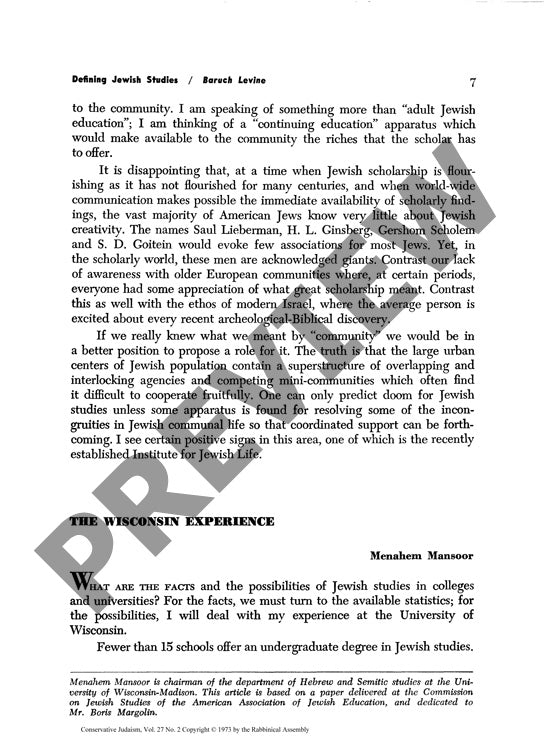The Wisconsin Experience
Couldn't load pickup availability
In 1960s America, Jewish studies programs struggled to gain academic footing, with only four universities maintaining independent departments despite growing student interest. Drawing on eighteen years of experience directing Hebrew and Semitic Studies at the University of Wisconsin-Madison, this analysis reveals how strategic community partnerships and institutional autonomy shaped program success. The Wisconsin department, launched through a $75,000 community investment in 1955, exemplifies effective growth—expanding to eleven faculty members, 452 students, and 23 courses while awarding over 50 B.A.'s, 33 M.A.'s, and six Ph.D.'s. Quantitative assessment of enrollment data, funding patterns, and graduation rates, combined with qualitative analysis of program development, highlights significant challenges, including federal funding inequities where Arabic studies received 15 times more National Defense Education Act fellowships than Hebrew studies. Wisconsin's innovative correspondence courses reached over 1,800 students nationwide, demonstrating potential for broader impact. Evidence indicates that successful Jewish studies programs depend on four key factors: independent departmental status, strong Hebrew language components, sustained community financial support, and careful balance between academic objectivity and cultural relevance to ensure both scholarly rigor and student engagement.

More Information
-
Physical Description
-
Publication Information
Published 1973
ISBN
-
Publication Credits
Menahem Mansoor

